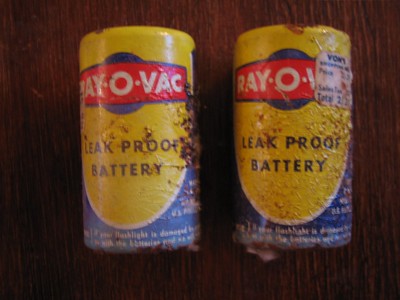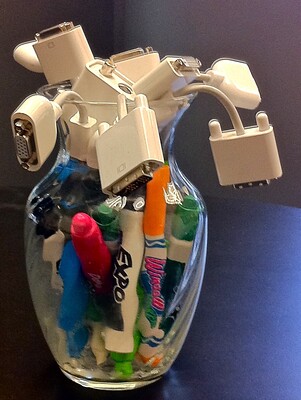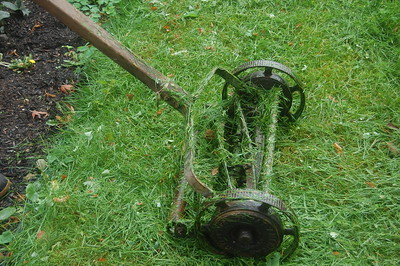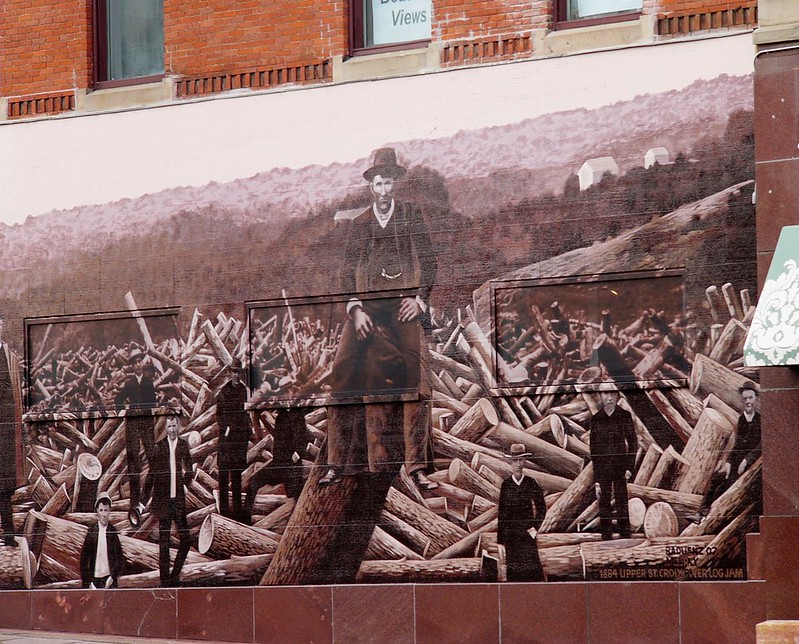It’s time to charge your battery.
 When a car’s battery is low and doesn’t have enough energy to start the car, you change your expectations about travel plans, hook up the battery to a charger and give it the time it needs to charge. You don’t keep trying to start the car because the already tired battery gets more tired. You know the signs – every time you turn the key, the engine turns more slowly and at some point, the slow whirring decays into a clicking of the solenoid.
When a car’s battery is low and doesn’t have enough energy to start the car, you change your expectations about travel plans, hook up the battery to a charger and give it the time it needs to charge. You don’t keep trying to start the car because the already tired battery gets more tired. You know the signs – every time you turn the key, the engine turns more slowly and at some point, the slow whirring decays into a clicking of the solenoid.
People don’t run on batteries, but like batteries, we sometimes run low on cranking power. But where we accept the reality that sometimes a car battery will not start the car, we don’t see the degradation of people’s performance the same way. Sure, the signs are more subtle – reduced ability to concentrate, reduced productivity, variability in output, and the like – but the signs are there for all to see. And where the car simply refuses to start, sometimes people blame themselves for their low battery and over-exert themselves to keep the projects moving, even when it’s not in their best interest.
It’s vacation season. Take the time you need to charge your battery and don’t feel guilty about it. Try to hold onto the fact that you’re not helping things in the long run by blocking yourself from the rest you need now. And, sure, you’re good at your job, but the company can handle things while you’re on holiday. Or, better yet, why not flip it on its head and declare your time away as a growth opportunity for someone on your team to fill in for you and test drive your job?
They will get the chance to interact with different people in the organization and likely get a broader picture of what’s going on at the company. They will get a chance to share their thoughts and ideas, which will feel good, and other leaders will see them in action. It’s a win for everyone.
And while you’re away, don’t check in. That’s just like pulling the plug on the battery charger before it has a chance to do its work.
“Old Ray-O-Vac Batteries” by deanj is licensed under CC BY 2.0.
Problems, Learning, Business Models, and People
 If you know the right answer, you’re working on an old problem or you’re misapplying your experience.
If you know the right answer, you’re working on an old problem or you’re misapplying your experience.
If you are 100% sure how things will turn out, let someone else do it.
If there’s no uncertainty, there can be no learning.
If there’s no learning, your upstart competitors are gaining on you.
If you don’t know what to do, you’ve started the learning cycle.
If you add energy to your business model and it delivers less output, it’s time for a new business model.
If you wait until you’re sure you need a new business model, you waited too long.
Successful business models outlast their usefulness because they’ve been so profitable.
When there’s a project with a 95% chance to increase sales by 3%, there’s no place for a project with a 50% chance to increase sales by 100%.
When progress has slowed, maybe the informal networks have decided slower is faster.
If there’s something in the way, but you cannot figure out what it is, it might be you.
“A bouquet of wilting adapters” by rexhammock is licensed under CC BY-SA 2.0.
The best time to design cost out of our products is now.
 With inflation on the rise and sales on the decline, the time to reduce costs is now.
With inflation on the rise and sales on the decline, the time to reduce costs is now.
But before you can design out the cost you’ve got to know where it is. And the best way to do that is to create a Pareto chart that defines product cost for each subassembly, with the highest cost subassemblies on the left and the lowest cost on the right. Here’s a pro tip – Ignore the subassemblies on the right.
Use your costed Bill of Materials (BOMs) to create the Paretos. You’ll be told that the BOMs are wrong (and they are), but they are right enough to learn where the cost is.
For each of the highest-cost subassemblies, create a lower-level Pareto chat that sorts the cost of each piece-part from highest to lowest. The pro tip applies here, too – Ignore the parts on the right.
Because the design community designed in the cost, they are the ones who must design it out. And to help them prioritize the work, they should be the ones who create the Pareto charts from the BOMs. They won’t like this idea, but tell them they are the only ones who can secure the company’s future profits and buy them lots of pizza.
And when someone demands you reduce labor costs, don’t fall for it. Labor cost is about 5% of the product cost, so reducing it by half doesn’t get you much. Instead, make a Pareto chart of part count by subassembly. Focus the design effort on reducing the part count of subassemblies on the left. Pro tip – Ignore the subassemblies on the right. The labor time to assemble parts that you design out is zero, so when demand returns, you’ll be able to pump out more products without growing the footprint of the factory. But, more importantly, the cost of the parts you design out is also zero. Designing out the parts is the best way to reduce product costs.
Pro tip – Set a cost reduction goal of 35%. And when they complain, increase it to 40%.
In parallel to the design work to reduce part count and costs, design the test fixtures and test protocols you’ll use to make sure the new, lower-cost design outperforms the existing design. Certainly, with fewer parts, the new one will be more reliable. Pro tip – As soon as you can, test the existing design using the new protocols because the only way to know if the new one is better is to measure it against the test results of the old one.
And here’s the last pro tip – Start now.
Image credit — aisletwentytwo
The Power of Stopping
 If when you write your monthly report no one responds with a question of clarification or constructive comment, this may be a sign your organization places little value on your report and the work it stands for. If someone sends a thank you email and do not mention something specific in your report, this masked disinterest is a half-step above non-interest and is likely also a sign your organization places little value on your report and the work it stands for.
If when you write your monthly report no one responds with a question of clarification or constructive comment, this may be a sign your organization places little value on your report and the work it stands for. If someone sends a thank you email and do not mention something specific in your report, this masked disinterest is a half-step above non-interest and is likely also a sign your organization places little value on your report and the work it stands for.
If you want to know for sure what people think of your work, stop writing your report. If no one complains, your work is not valuable to the company. If one person complains, it’s likely still not valuable. And if that single complaint comes from your boss, your report/work is likely not broadly valuable, but you’ll have to keep writing the report.
But don’t blame the organization because they don’t value your work. Instead, ask yourself how your work must change so it’s broadly valuable. And if you can’t figure a way to make your work valuable, stop the work so you can start work that is.
If when you receive someone else’s monthly report and you don’t reply with a question of clarification or constructive comment, it’s because you don’t think their work is all that important. And if this is the case, tell them you want to stop receiving their report and ask them to stop sending them to you. Hopefully, this will start a discussion about why you want to stop hearing about their work which, hopefully, will lead to a discussion about how their work could be modified to make it more interesting and important. This dialog will go one of two ways – they will get angry and take you off the distribution list or they will think about your feedback and try to make their work more interesting and important. In the first case, you’ll receive one fewer report and in the other, there’s a chance their work will blossom into something magical. Either way, it’s a win.
While reports aren’t the work, they do stand for the work. And while reports are sometimes considered overhead, they do perform an inform function – to inform the company of the work that’s being worked. If the work is amazing, the reports will be amazing and you’ll get feedback that’s amazing. And if the work is spectacular, the reports will be spectacular and you’ll get feedback that matches.
But this post isn’t about work or reports, it’s about the power of stopping. When something stops, the stopping is undeniable and it forces a discussion about why the stopping started. With stopping, there can be no illusion that progress is being made because stopping is binary – it’s either stopped or it isn’t. And when everyone knows progress is stopped, everyone also knows the situation is about to get some much-needed attention from above, wanted or not.
Stopping makes a statement. Stopping gets attention. Stopping is serious business.
And here’s a little-known fact: Starting starts with stopping.
Image credit — joiseyshowaa
Free Resources
 Since resources are expensive, it can be helpful to see the environment around your product as a source of inexpensive resources that can be modified to perform useful functions. Here are some examples.
Since resources are expensive, it can be helpful to see the environment around your product as a source of inexpensive resources that can be modified to perform useful functions. Here are some examples.
Gravity is a force you can use to do your bidding. Since gravity is always oriented toward the center of the earth, if you change the orientation of an object, you change the direction gravity exerts itself relative to the object. If you flip the object upside down, gravity will push instead of pull.
And it’s the same for buoyancy but in reverse. If you submerge an object of interest in water and add air (bubbles) from below, the bubbles will rise and push in areas where the bubbles collect. If you flip over the object, the bubbles will collect in different areas and push in the opposite direction relative to the object.
And if you have water and bubbles, you have a delivery system. Add a special substance to the air which will collect at the interface between the water and air and the bubbles will deliver it northward.
If you have motion, you also have wind resistance or drag force (but not in deep space). To create more force, increase speed or increase the area that interacts with the moving air. To change the direction of the force relative to the object, change the orientation of the object relative to the direction of motion.
If you have water, you can also have ice. If you need a solid substance look to the water. Flow water over the surface of interest and pull out heat (cool) where you want the ice to form. With this method, you can create a protective coating that can regrow as it gets worn off.
If you have water, you can make ice to create force. Drill a blind hole in a piece of a brittle material (granite), fill the hole with water, and freeze the water by cooling the granite (or leave it outside in the winter). When the water freezes it will expand, push on the granite and break it.
These are some contrived examples, but I hope they help you see a whole new set of free resources you can use to make your magic.
Thank you, VF.
Image credit – audi_insperation
The Keepers of the Process
 If you want to improve the work, ask the people who do the work. They know the tools and templates. They know the ins and outs of the process. They know when and how to circumvent the process. And they know what will break if you try to change the process. And what breaks is the behavior of the people that use the process.
If you want to improve the work, ask the people who do the work. They know the tools and templates. They know the ins and outs of the process. They know when and how to circumvent the process. And they know what will break if you try to change the process. And what breaks is the behavior of the people that use the process.
When a process changes, people’s behavior does not. Once people learn the process, they want to continue to work that way. It’s like their bodies know what to do without even thinking about it. But on the other hand, when a process doesn’t meet the need, people naturally modify their behavior to address the shortcomings of the process. And in this case, people’s behavior doesn’t match the process yet they standardize their behavior on circumventing the process. Both of these realities – people like to do what they did last time and people modify their behavior to address shortcomings of the process – make it difficult for people to change their behavior when the process changes.
When the process doesn’t work but the modified behavior does, change the process to match the modified behavior. When that’s not possible, ask the people why they modified their behavior and ask them to come up with a process that is respectful of their on-the-fly improvements and respectful of the company’s minimum requirements for their processes.
When the process doesn’t work but the people are following it anyway, ask them to come up with ways to improve the process and listen to their ideas. Then, run a pilot of their new process on the smallest scale and see what happens. If it makes things better, adopt the process on a larger scale and standardize on the new way to work. If it makes things worse, stop the pilot and try another improvement suggested by the team, again on a small scale. Repeat this process until the process performs satisfactorily.
When the people responsible for doing the work are given the opportunity to change their processes for the better, there’s a good chance the broader population that uses the process will ultimately align their behavior to the new process. But the change will not be immediate and there may be some backsliding. But, because the keepers of the process feel ownership of the new process and benefit from the change, they will continue to reinforce the new behavior until it becomes new behavior. And if it turns out the new process needs to be modified further, the keepers of the process will make those changes and slowly align the behavior to match the process.
When the new process is better than the old one, people will ultimately follow the new process. And the best way to make the new process better than the old one is to ask the people who do the work.
Image credit — Old Photo Profile
Is it time to break the logjam?
Clearing a logjam is not about increasing the force of the water. It’s about moving one log out of the way, watching what happens, and choosing the next log to move.
Crossing a raging river is not about pushing against the current. It’s about seeing what’s missing and using logs to build a raft.
Trekking across the tundra after crossing the raging river is not about holding onto the logs that helped you cross. It’s about seeing what’s not needed and leaving the raft by the river.
The trick is to know when to move the logs, when to use them to build a raft, and when to leave them behind.
Image credit: “Log Jam Mural _ Stillwater MN” by Kathleen Tyler Conklin is licensed under CC BY 2.0.
How To Solve Transparent Problems
 One of the best problems to solve for your customers is the problem they don’t know they have. If you can pull it off, you will create an entirely new value proposition for them and enable them to do things they cannot do today. But the problem is they can’t ask you to solve it because they don’t know they have it.
One of the best problems to solve for your customers is the problem they don’t know they have. If you can pull it off, you will create an entirely new value proposition for them and enable them to do things they cannot do today. But the problem is they can’t ask you to solve it because they don’t know they have it.
To identify problems customs can’t see, you’ve got to watch them go about their business. You’ve got to watch all aspects of their work and understand what they do and why they do it that way. And it’s their why that helps you find the transparent problems. When they tell you their why, they tell you the things they think cannot change and the things they consider fundamental constraints. Their whys tell you what they think is unchangeable. And from their perspective, they’re right. These things are unchangeable because they don’t know what’s possible with new technologies.
Once you know their unchangeable constraints, choose one to work on and turn it into a tight problem statement. Then use your best tools and methods to solve it. Once solved, you’ve got to make a functional prototype and show them in person. Without going back to them with a demonstration of a functional prototype, they won’t believe you. Remember, you did something they didn’t think was possible and changed the unchangeable.
When demonstrating the prototype to the customer, just show it in action. Don’t describe it, just show them and let them ask questions. Listen to their questions so you can see the prototype through their eyes. And to avoid leading the witness, limit yourself to questions that help you understand why they see the prototype as they do. The way they see the prototype will be different than your expectations, and that difference is called learning. And if you find yourself disagreeing with them, you’re doing it wrong.
This first prototype won’t hit the mark exactly, but it will impress the customer and it will build trust with them. And because they watched the prototype in action, they will be able to tell you how to improve it. Or better yet, with their newfound understanding of what’s possible, they might be able to see a more meaningful transparent problem that, once solved, could revolutionize their industry.
Customers know their work and you know what’s possible. And prototypes are a great way to create the future together.
“Transparent” by Rene Mensen is licensed under CC BY 2.0.
What you do next is up to you.
 If you don’t know why you’re doing what you’re doing, you can try to remember why you started the whole thing or you can do something else. Either can remedy things, but how do you choose between them? If you’ve forgotten your “why”, maybe it’s worth forgetting or maybe something else temporarily came up that pushed your still-important why underground for a short time. If it’s worth forgetting, maybe it’s time for something else. And if it’s worth remembering, maybe it’s time to double down. Only you can choose.
If you don’t know why you’re doing what you’re doing, you can try to remember why you started the whole thing or you can do something else. Either can remedy things, but how do you choose between them? If you’ve forgotten your “why”, maybe it’s worth forgetting or maybe something else temporarily came up that pushed your still-important why underground for a short time. If it’s worth forgetting, maybe it’s time for something else. And if it’s worth remembering, maybe it’s time to double down. Only you can choose.
If you still remember why you’re doing what you’re doing, you can ask yourself if your why is still worth its salt or if something changed, either inside you or in your circumstances, that has twisted your why to something beyond salvage. If your why is still as salty as ever, maybe it’s right to stay the course. But if it’s still as salty as ever but you now think it’s distasteful, maybe it’s time for a change.
When you do what you did last time, are you more efficient or more dissatisfied, or both? And if you imagine yourself doing it again, do you look forward to more efficiency or predict more dissatisfaction? These questions can help you decide whether to keep things as they are or change them.
What have you learned over the last year? Whether your list is long or if it’s short, it’s a good barometer to inform your next chapter.
What new skills have you mastered over the last year? Is the list long or short? If you don’t want to grow your mastery, keep things as they are.
Do the people you work with inspire you or bring you down? Are you energized or depleted by them? If you’re into depletion, there’s no need to change anything.
Do you have more autonomy than last year? And how do you feel about that? Let your answers guide your future.
What is the purpose behind what you do? Is it aligned with your internal compass? These two questions can bring clarity.
You’re the only one who can ask yourself these questions; you’re the only one who can decide if you like the answers; and you’re the only one who is responsible for what you do next. What you do next is up to you.
“Fork in the road” by Kai Hendry is licensed under CC BY 2.0.
Believe it or not, people’s capacity to do work is finite.
 When cars run out of gas, they can no longer get the job done until their tanks are filled up. And it’s the same with people, except people are asked to keep on truckin’ even though their tanks are empty.
When cars run out of gas, they can no longer get the job done until their tanks are filled up. And it’s the same with people, except people are asked to keep on truckin’ even though their tanks are empty.
When machines are used for a certain number of hours, they are supposed to be given rest and routine maintenance. If the maintenance isn’t completed as defined in the operator’s manual, the warranty is voided. Maybe we could create a maintenance schedule for people. And if it’s not done, we could be okay with reduced performance, like with a machine. And when the scheduled maintenance isn’t performed on time, maybe we could blame the person who prevented it from happening.
If your lawnmower could tell you when you were using it in a way that would cause it damage, would you listen and change your behavior? How about if a person said a similar thing to you? To which one would you show more compassion?
When your car’s check engine light comes on, would you pretend you don’t see it or would you think that the car is being less than truthful? What if a person tells you their body is throwing a warning light because of how you’re driving them? Would you believe them or stomp on the accelerator?
We expect our machines to wear out and need refurbishment. We expect our cars to run out of gas if we don’t add fuel. We expect our lawnmowers to stall if we try to mow grass that’s two feet tall. We expect that their capacities and capabilities are finite. Maybe we can keep all this in mind when we set expectations for our people.
“our ‘new’ lawnmower” by sharon_k is licensed under CC BY-SA 2.0.
Triangulation of Leadership
Put together things that contradict yet make a wonderfully mismatched pair.
Say things that contradict common misunderstandings.
See the dark and dirty underside of things.
Be more patient with people.
Stomp on success.
Dissent.
Tell the truth even when it’s bad for your career.
See what wasn’t but should have been.
Violate first principles.
Protect people.
Trust.
See things as they aren’t.
See what’s missing.
See yourself.
See.
“man in park (triangulation)” by Josh (broma) is licensed under CC BY 2.0.


 Mike Shipulski
Mike Shipulski